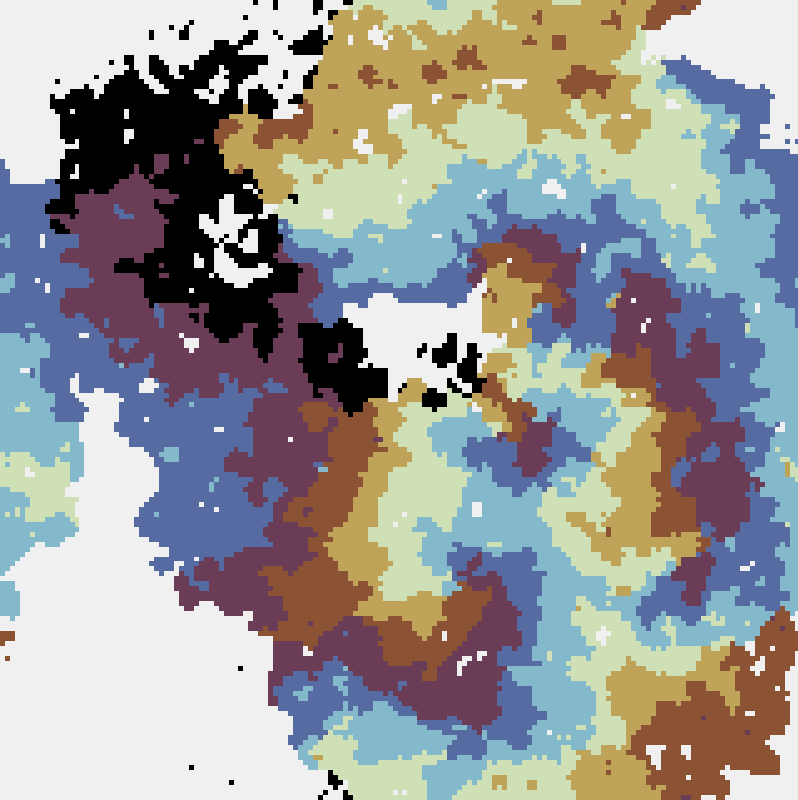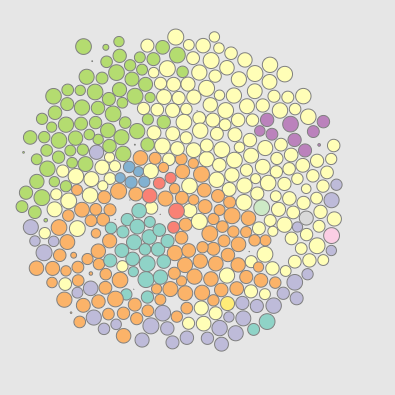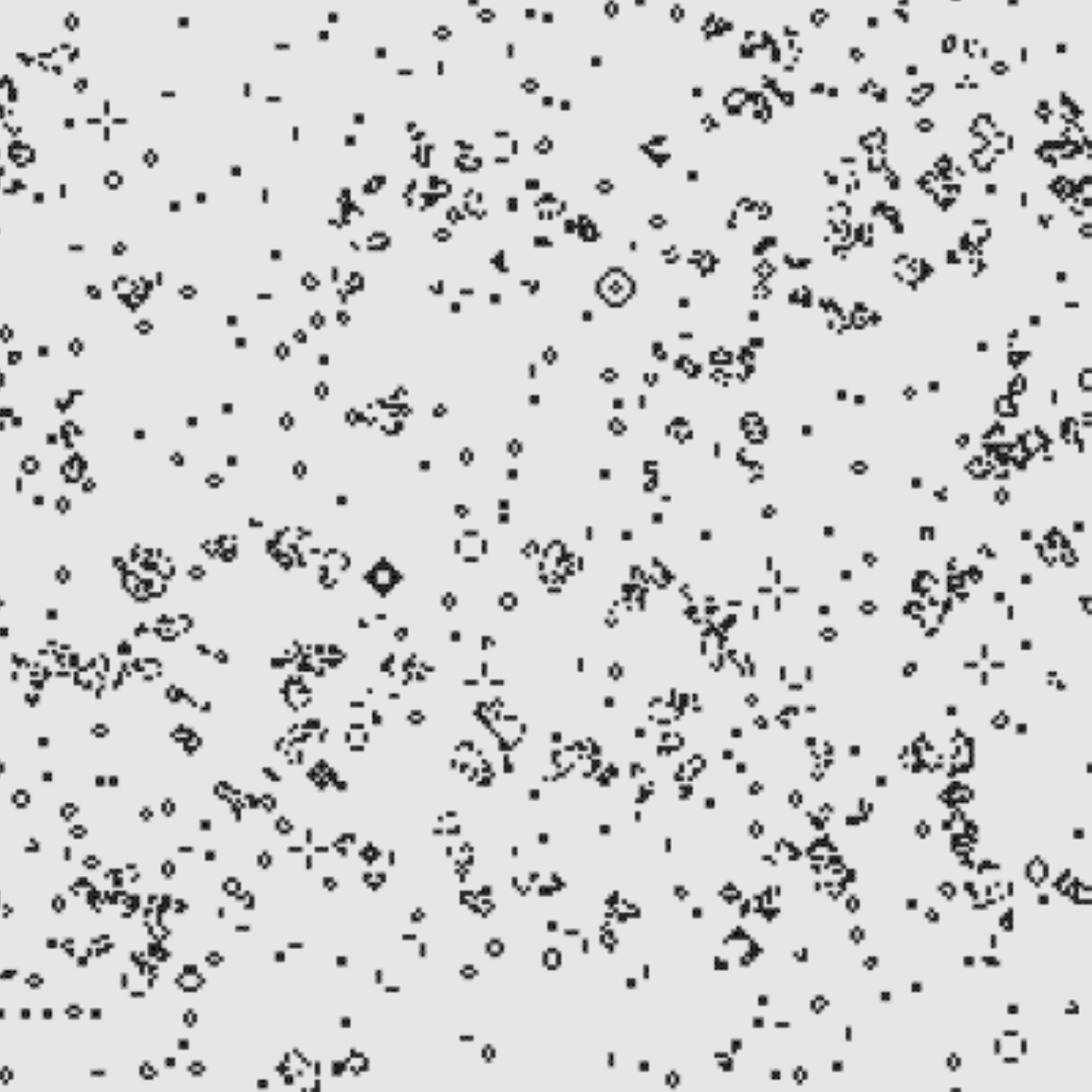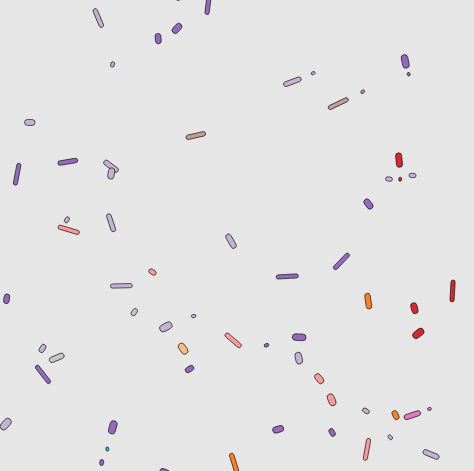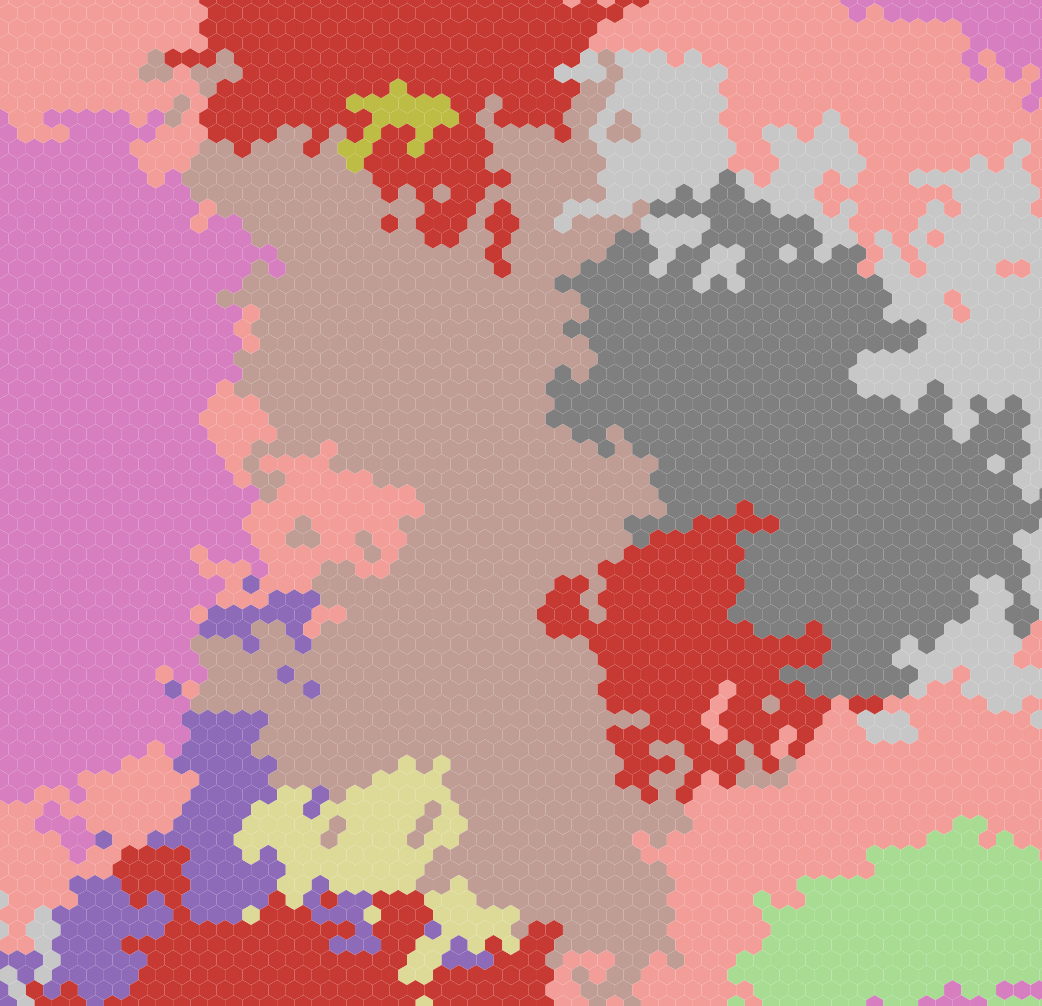“The Prisoner's Kaleidoscope”
The prisoner's dilemma game on a lattice
This explorable illustrates beautiful dynamical patterns that can be generated by a simple game theoretic model on a lattice. The core of the model is the Prisoner’s Dilemma, a legendary game analyzed in game theory. In the game, two players can choose to cooperate or defect. Depending on their choice, they receive a pre-specified payoffs. The payoffs are chosen such that it seems difficult to make the right strategy choice.
“Eigenartig”
The spatial hypercycle model
This explorable illustrates the dynamics of the famous hypercycle model. It was originally conceived by Peter Schuster and Nobel laureate Manfred Eigen (1927-2019) in 1979 to investigate the chemical basis of the origin of life. Because living things make copies of themselves, in the beginning complex chemicals like polymer chains, including small RNA molecules (see e.g. RNA-world), had to acquire the ability to catalyse their own synthesis from smaller parts, e.g. single nucleotides.
“Repliselmut”
Yet another Complexity Explorable on evolution
This explorable illustrates how variation and selection in a population of replicating organisms naturally leads to a gradual increase in the population’s overall fitness. The explorable simulates a system that is captured (to some extent) by the Replicator-Mutator Equation which is both, a generalization of the famous Replicator Equation and the Quasispecies Equation.
“Nah dah dah nah nah... (Opus, 1984)”
Conway's Game of Life
“Surfing a Gene Pool”
Expansion of clones with idential fitness
This explorable is about pattern formation in a model system for the growth of a bacterial population in a petri dish in which the bacterial population is made up of a mix of two or three mutant strains that have identical fitness and reproduction properties. In the model system, an initially well mixed drop of bacteria with an equal amounts of every mutant strain is positioned in the center of the petri dish. After that, the bacteria start replicating, the population expands radially and a pattern will emerge.
“Maggots in the Wiggle Room”
The dynamics of evolution
This explorable illustrates an evolutionary process in an “ecosystem” of interacting species (cartoon maggots, in this case). Individuals move around in their enviroment, replicate and eat each other. Optionally, mutations can generate new species. The system is similar to the Explorable A Patchwork Darwinge, only a bit more animalistc and dynamically slightly different. However, for this one here, you need a bit more patience in order to observe interesting effects.
“A Patchwork Darwinge”
Evolution: Variation and Selection
This explorable illustrates how the combination of variation and selection in a model biological system can increase the average fitness of a population of mutants of a species over time. Fitness of each mutant quantifies how well it can reproduce compared to other mutants. Variation introduces new mutants. Sometimes a mutant’s fitness is lower than its parent’s, sometimes higher. When lower, the mutant typically goes extinct, if higher the mutant can outperform others and proliferate in the population. This way mutants with higher fitness are naturally selected.

